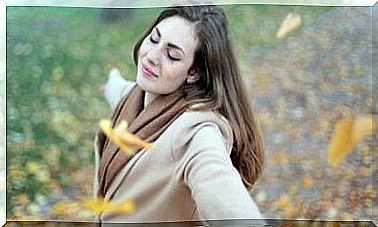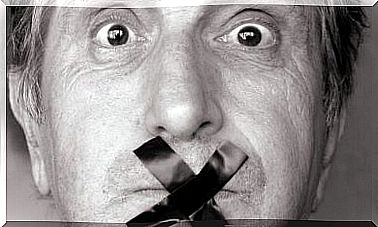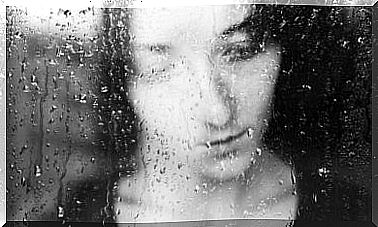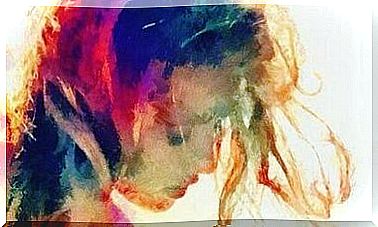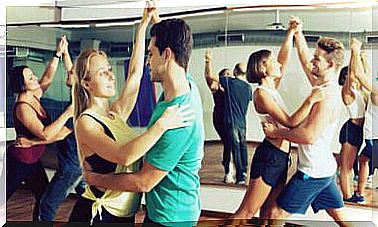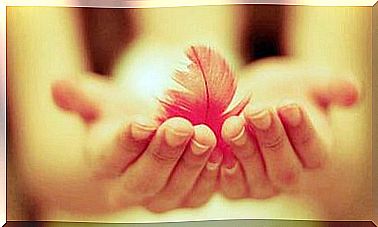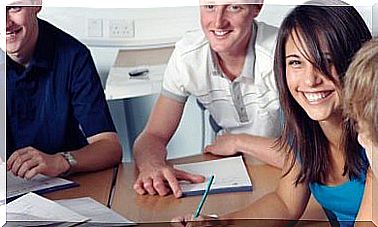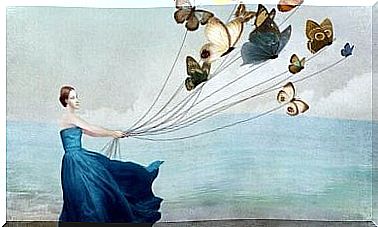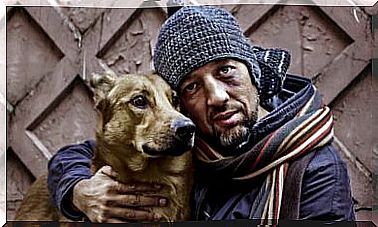The Body Language Of Fear
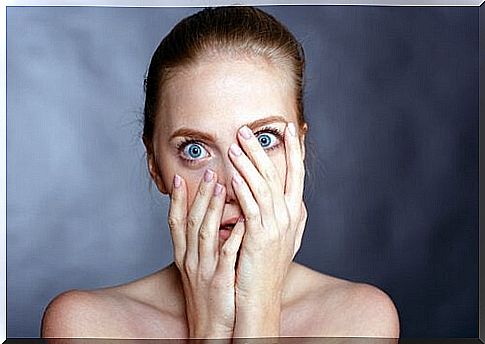
While feeling fear is normal and perfectly legitimate, there are situations in which externalizing it is not in our best interests. A job interview situation, for example, or a public speaking engagement. Unfortunately or fortunately, there is a body language of fear that often reveals what is going on inside us.
While there is no dictionary for interpreting fear’s body language , people are endowed with a kind of radar that allows us to read its signals. This is not a rational interpretation of the whole. We simply intuit that someone is afraid and unconsciously act accordingly. That is, we distrust those who distrust themselves or we feel a greater sense of power when we perceive the vulnerability in the other.
It’s important to know the body language of fear. If we get to know her, maybe we can have more control over her. In principle, we get two benefits: one, capturing the fear of others, even if they don’t express it openly. And two, managing our own attitude and posture so as not to allow fear to project if we don’t want to. These are the foundations of that language.
Micro expressions on the face
The face is perhaps the most expressive element of the body language of fear. It is in the face that fear is first reflected. Sometimes the gesture is very evident, at other times it is disguised, but it appears. On the other hand, whether it is more or less evident depends in many cases on the intensity of the emotion.
Either way, there are gestures that are quite easy to identify. The first is to raise your eyebrows a little while your forehead remains tense. If the fear comes after a surprise, the eyebrow movement will be more evident. If it is a situation that generates fear, but there is no surprise, the tension in the forehead will prevail.
It is also common for the lower eyelids to remain tense. At the same time, the mouth will be slightly ajar, and the corners of the mouth will be pulled back. Usually, it’s as if the whole face has been contracted backwards. As if there is something pulling the face, while there is resistance to this movement.
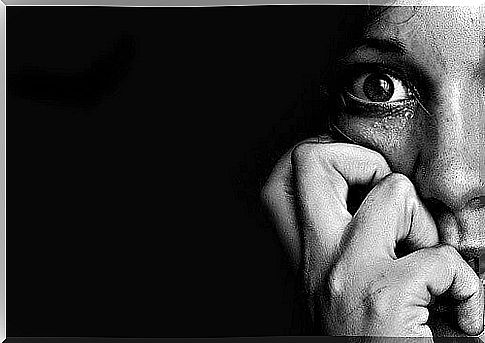
The posture and body language of fear
Posture is also a very important element in the body language of fear. Usually, when we’re scared, our muscles tense and we adopt postures in which our vital organs are protected. The first thing that happens is that we bend over (taking up less space). This is an expression that denotes the desire to take refuge in ourselves for the sake of self-protection.
Insecurity, nervousness and anxiety are manifestations of fear. These three states are usually revealed when quick or compulsive movements are performed. A person who has difficulty keeping quiet is a person who is not calm. When fear is very strong, movements are also likely to be more abrupt or awkward.
Likewise, it is common for a person with fear to fold their arms. This gesture is a sign of defense. The person generates a type of barrier that protects and separates him from the world. This barrier can also be a manifestation of the desire to preserve oneself, rejecting others.
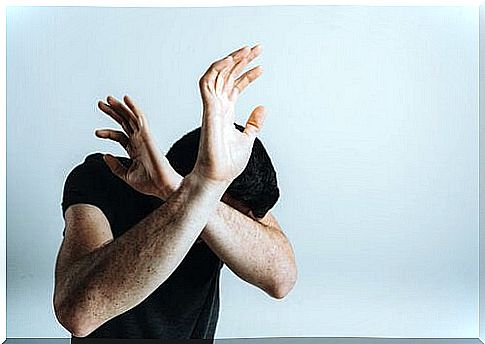
other telltale gestures
There are still other gestures and expressions that are part of the body language of fear. For example, the look. Nervousness causes the gaze to become evasive, while increasing the frequency of blinking. But if what a person feels is fear, pure and simple, he usually keeps his eyes still, his gaze fixed, and he hardly blinks. It is a mechanism activated with fear. Your goal is not to lose sight of what appears to be threatening.
On the other hand, hands are also part of communication and express emotions. In relation to fear, they are no exception. When a person is afraid, they tend to twist and clasp their hands. Clenching fists or hiding hands is also frequent. Not leaving the extremities exposed is an instinctive act of defense, as they are a common target of attacks in the animal world.
In general, when a person is frightened, they tend to make short, quick, and erratic movements. And when a person is truly terrified, the opposite happens: he becomes paralyzed. In the first case, the person is not quiet. In the second, she remains static, with her body curled up and leaning back. Basically, this is how fear body language works.
